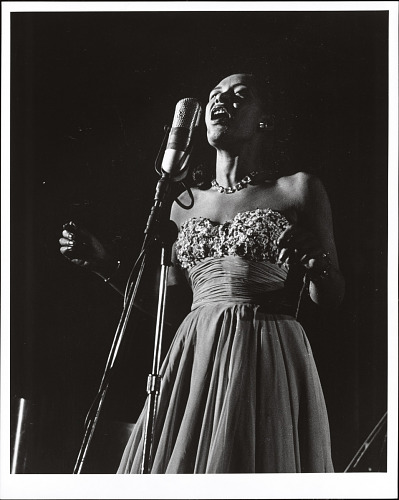Billie Holiday, The Lady Who Sang the Blues

February 24, 2023
Eleanora “Billie Holiday” Fagan was born on April 7, 1915 in Philadelphia, Pennsylvania. She is one of the greatest singers from the 1930s to the ’50s. Eleanora Fagan is the daughter of Clarence Holiday, a professional musician who, for a time, played guitar with the Fletcher Henderson band in the 1920s. Fagan and her dad had a very tenuous relationship, and she was raised mainly by her mom. Fagan and her mom were very poor, and she dropped out of school in the fifth grade. She eventually found a job running errands in a brothel, and in 1928 she moved with her mother from Baltimore, Maryland, to New York City.
When she was twelve, Fagan moved with her mother to Harlem. Fagan eventually found a job singing in a Harlem nightclub. She had no formal musical training, but with an intuitive sense of musical structure and a wealth of experience that she gathered at the root level of jazz and blues, she developed a singing style that was deeply moving and individual. She then got her big break when Benny Hammond found her, and in 1933, she made her first recordings with Benny Goodman and others.
Two years later, a series of recordings with Teddy Wilson and members of Count Basie’s band brought her wider recognition and launched her career as the leading jazz singer of her time. In 1937 and 1938 Fagan toured with Count Basie. In 1940 she began to perform exclusively in cabarets and concerts. 1936 and 1942 marked her peak years with Lester Young who gave her the nickname “Lady Day.” The vintage years of Holiday’s professional and private liaison with Young were marked by some of the best recordings of the interplay between a vocal line and an instrumental obbligato.
Sadly, in 1947, Eleanora was arrested for a narcotics violation and spent a year in a rehabilitation center. No longer able to obtain a cabaret license to work in New York City, she continued to perform in concerts and clubs in surrounding areas. Her constant struggle with a heroin addiction ravaged her voice, although not her technique. In 1956 she wrote an autobiography with William Dufty called “Lady Sings the Blues,” which was made into a motion picture in 1972. Holiday’s health began to fail because of her drug and alcohol abuse, and she, unfortunately, passed away in 1959.


Uju Anyanwu • Sep 10, 2023 at 4:28 pm
Very insightful Kamsi.